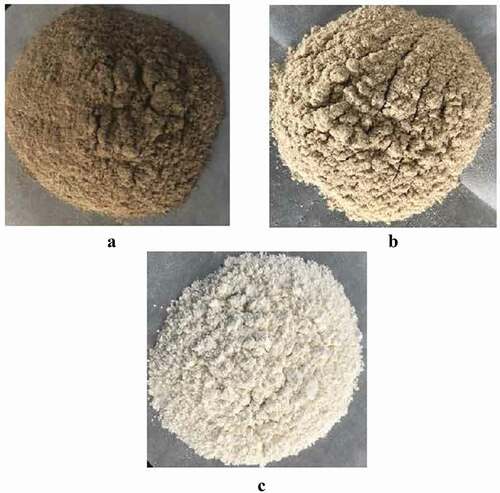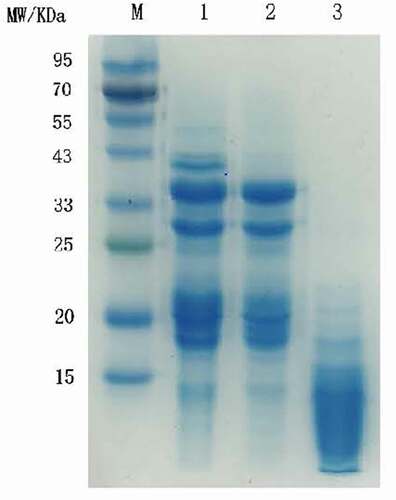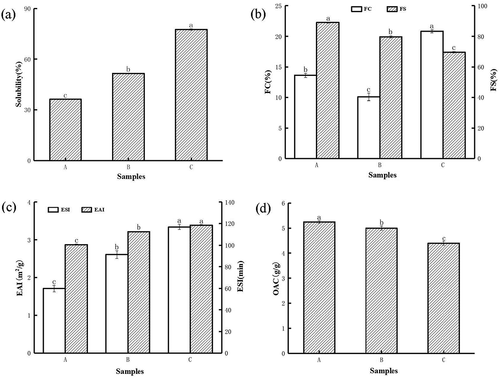Figures & data
Table 1. Lightness value, degree of hydrolysis, protein and polyphenol content of sunflower seed protein. (A) sunflower seed protein, (B) macroporous resin adsorption decolorization of sunflower seed protein, (C) limited enzyme hydrolysis combined with macroporous resin decolorize sunflower seed protein. The data represents the mean ± standard deviation of three experiments (n = 3). Different lowercase letters in each row indicate significant differences (p < .05)
Figure 1. The color of sunflower seed protein. (A)sunflower seed protein, (B) macroporous resin adsorption decolorization of sunflower seed protein, (C) limited enzyme hydrolysis combined with macroporous resin decolorize sunflower seed protein

Figure 2. SDS-PAGE profile of sunflower seed protein. Lane M: the marker proteins, Lane 1: sunflower seed protein, Lane 2: macroporous resin adsorption decolorization of sunflower seed protein, Lane3: limited enzyme hydrolysis combined with macroporous resin decolorize sunflower seed protein

Table 2. Secondary structure of sunflower seed protein. (A) sunflower seed protein, (B) macroporous resin adsorption decolorization of sunflower seed protein, (C) limited enzyme hydrolysis combined with macroporous resin decolorize sunflower seed protein. Data are represents the mean ± the standard deviation of three experiments (n = 3). Different lowercase letters in each column indicate a significant difference (p < .05)
Figure 3. Circular dichroism (a), particle size (b), intrinsic fluorescence intensity (c) and surface hydrophobicity (d) of sunflower seed protein. (A) sunflower seed protein, (B) macroporous resin adsorption decolorization of sunflower seed protein, (C) limited enzyme hydrolysis combined with macroporous resin decolorize sunflower seed protein

Table 3. Average particle size of sunflower seed protein. (A) sunflower seed protein, (B) macroporous resin adsorption decolorization of sunflower seed protein, (C) limited enzyme hydrolysis combined with macroporous resin decolorize sunflower seed protein. Data are represents the mean ± the standard deviation of three experiments (n = 3). Different lowercase letters in each row indicate a significant difference (p < .05)
Figure 4. The image of Scanning electron microscope of sunflower seed protein(500 times). (A) sunflower seed protein, (B) macroporous resin adsorption decolorization of sunflower seed protein, (C) limited enzyme hydrolysis combined with macroporous resin decolorize sunflower seed protein

Figure 5. Solubility (a), foaming ability (b), emulsifying capacity (c), and oil absorption capacity (d) of sunflower seed protein. (A)sunflower seed protein; (B) macroporous resin adsorption decolorization of sunflower seed protein; (C) limited enzyme hydrolysis combined with macroporous resin decolorize sunflower seed protein

